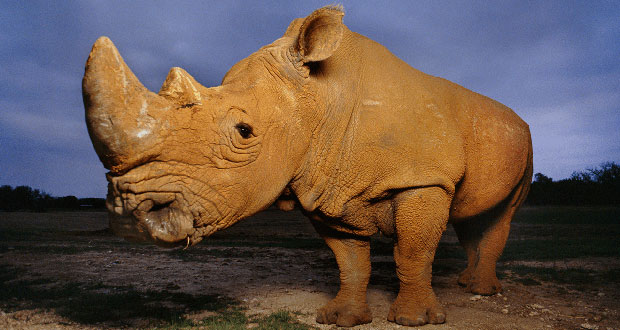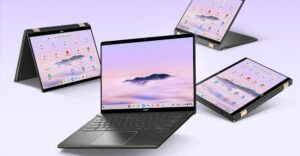Cisco has reduced the poaching of endangered rhinos in Africa by a whopping 96 percent. This success comes at a time when kids appear to be increasingly at risk from rogue school shooters and the United States government seems deadlocked on gun control.
Guns kill rhinos as well, but the focus of Cisco’s tech is on catching the poachers who kill around 1,000 endangered rhinos a year, rather than on taking away their weapons of choice. Where implemented, the solution has all but eliminated the problem.
The rhino problem in Africa presents logistics issues that are relevant to the U.S. border problem. In both cases, the goal is to keep unauthorized people out, but because the borders are so extensive, the cost of staffing to protect them is problematic.
Technology is a force multiplier, though, and I believe a solution similar to the one Cisco and Dimension Data developed to protect the rhino population could be used to provide better protection for schools and the U.S. border.
I’ll share some thoughts on the application of technology to improve problem-solving and then close with my product of the week: my latest favorite laptop.
Applying Enterprise Security Solutions to World Problems
One of the fascinating aspects of Cisco’s efforts to protect endangered species is that the methods used aren’t far removed from how we now protect against electronic intrusions. It used to be that we relied largely on firewalls and perimeter protection to keep our enterprises safe. However, as firewalls became more porous and attackers more creative, we accepted that walls wouldn’t work by themselves and moved to assuming attackers would get in.
That shifted our efforts from perimeter protection toward in-depth protection, with emphasis on monitoring activity inside the enterprise. As a result, we can identify and eliminate attacks, whether internally or externally sourced, more effectively.
Once you can effectively isolate potentially harmful behavior from normal behavior, you can target attackers and more likely catch them in the act — before they can do much damage or steal much data.
Granted, these defense in-depth methods have required a massive increase in the creation and application of artificial intelligence and instrumentation to get to scale. Once developed, though, the methods have broad applications outside of site security. For instance…
Saving the Rhinos
The issue with any form of animal protection in Africa is that there is a vast expanse of land but very little funding for people to patrol it effectively. Borders are hundreds of miles long, making a perimeter defense problematic (and no one is going to build Africa a wall). If you could identify the threat location in time, resources could be concentrated to deal with it. To accomplish that, it was necessary to shift the goal away from the near-impossible task of securing a massive site, and toward rapid threat identification.
A variety of instruments and sensors can be used for site monitoring. Networked vibration sensors, motion sensors, cameras and microphones can monitor massive areas with relatively low staffing. For instance, gunshots can be triangulated rapidly using a relatively modest number of sensors. Drones then can be used to locate poachers, so that resources can be sent in to arrest them.
At some future point, it might be possible to automate arrests using robots and drones, further reducing the need for human staff, along with the related risks.
While this approach doesn’t prevent poachers from getting in, it does identify them once they are present and tracks them inside. Even if the poachers make a kill, it is nearly impossible for them to get out with it.
Cisco’s initial effort has been so successful that the company is replicating it through a program called “Connected Conservation.” The goal is to protect endangered species on land and water around the world. The hope is that once the technology is in place, it will eradicate most forms of poaching for things like rhino horns and elephant tusks.
Preventing School Shootings
Addressing the problem of school safety in large part seems to revolve around arguments limiting access to guns. However, schools face a variety of risks that often are far more prevalent than gun violence. Illegal drugs, children seized or abused by adults or other children, suicides, and bullying are but a few of the issues making schools unsafe.
Applying the same kind of monitoring and artificial intelligence to schools should offer similar benefits to those derived from the fight against poachers, without excessively impacting privacy. Schools already are heavy users of security cameras. Adding more microphones and overlaying the solutions with artificial intelligence, so that likely threats could be identified more quickly, probably would have a greater near-term impact than attempts to eliminate guns.
Even if guns were in use, being able to triangulate the shooter would allow on-site security resources and arriving law enforcement to isolate and eliminate the threat more rapidly. It also would allow the school to notify classrooms regarding lockdown or escape protocols more effectively, reducing the potential for hostage-taking, and getting kids out of harm’s way.
Once in place, the AI could flag bullying behavior, spot violence, abuse or harassment, regardless of their form, and potentially identify people that could become future threats due to unusual behavior.
With similar technology, we could make schools far safer than they now.
Border Wall
The same could be said of the U.S. borders. For a fraction of the cost of a border wall, we could have a massive increase in our ability to monitor the border, identify those crossing illegally, and more effectively target those wishing to do the country harm (arms and drug smugglers).
With facial recognition software, we could scan for repeat offenders, known national criminals and gang members, enabling law enforcement to prioritize their capture. Compared to walls, which can be flown over or dug under, technological defense in-depth solutions would be vastly harder to overcome. Coupled with fast-response drones and potentially robotics, these types of solutions could cover huge areas, protecting the borders far more effectively than a static wall ever could.
Wrapping Up: Better, Faster, Cheaper, Safer
What Cisco highlights with its rhino-protection efforts in Africa is that enterprise security methods can be applied to physical security problems with amazing results. These same methods could be used to protect our schools and borders for a fraction of the cost and aggravation of gun control laws and physical walls.
Approaches that are better, faster, cheaper — and that lead to safer — are what technology is famous for. What Cisco demonstrated in Africa could have similar success in schools and help secure our borders.
Maybe it is time to use something we are good at to solve the nation’s problems rather than just argue about them. The U.S. is the world leader in technology. Perhaps it is technology that we need to tap to solve some of our bigger problems. Technology can keep us safer — we just need to use it properly.
AMD — along with Dell, HP and Lenovo — has rolled out a series of Ryzen-powered laptops and desktop machines. Given how badly Intel has been behaving of late, a lot of folks have been looking at AMD alternatives but not finding many that were that compelling — up to now.
That changed last week. I was particularly taken by HP’s offerings, which range from 13.3 inches to nearly 16 inches. The one I consider the best balance of size, performance and price is the HP EliteBook 735 G5.

HP has been going after Apple aggressively of late, and its designs showcase that effort.
Looking as though they were carved out of aluminum complete with ports and stunning displays, HP’s new laptops are a showcase for its One Life product strategy. “One Life” means that you aren’t an employee or a consumer but both — and in a laptop you want what you want, when you want it. That means attractive designs and full security features.
HP currently leads the segment with security features, including features that prevent your BIOS from being compromised, keep your critical security features running, and make sure a hostile website can’t infect you.
One unique feature is HP Sure View, which provides an optional integrated privacy screen so the person next to you can’t see your work or watch the movie you are watching. It is my view that every laptop should have this, and HP largely stands alone right now.
Like a lot of folks, I no longer trust Intel. I mean if the firm’s own CEO doesn’t believe it is a good investment, then neither should I. Thankfully, a number of strong AMD alternative products have entered the market all of a sudden, with the HP EliteBook 735 G5 moving to the top. That is enough to make it my product of the week.






















































